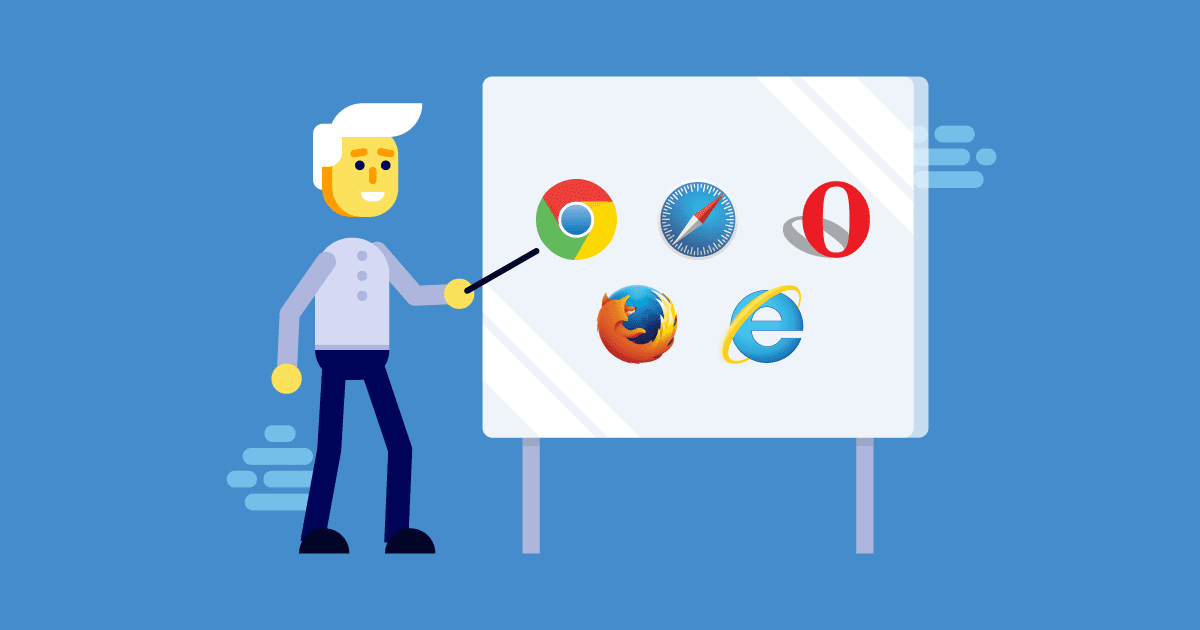5 Signs That Interactive Cross Browser Testing Is Necessary For Your Successful Website.

Behind any software, the basic purpose is to make sure who is going to use it and where it is going to be used. The first thing any users experience about any business is its website. These days there are many browsers like Google Chrome, Safari, Mozilla Firefox, Internet Explorer, Edge, etc. that too with a variety of versions, and each supports different features. People have the choice to access these according to their comfort. More and more websites are being created by many users so a professional website is something which is a must to have these days.
Suppose the customer is using Firefox and testing is done in Internet Explorer, now, here the user may face certain issues while accessing the application as every browser displays web pages in a different style, which is obvious that each browser may not support all the features of the application. Now you will want your website to work in the majority of the browsers and devices like Desktop, Laptop, Tab, Mobile, etc. Here the need for cross browsing testing comes into place, It simply allows you to check your application and its compatibility on various browsers.
Cross browser testing as its name implies is to perform testing on multiple browsers. It is a testing mechanism that ensures that your website or application is functionally performing fine as it was intended to perform in terms of, design, screen size, content, etc. in a variety of browsers and their versions and also in different operating systems.
After knowing about cross browser testing it’s time to discuss its necessity for a successful website.
1. The need for cross browser testing comes in when to test a website or a web application’s functionality and also UI design, layouts, alignment, screen, size, and content, not only in multiple browsers but also in different versions of a single browser on a variety of platforms, if, for example, the user faces any error or difficulty like waiting for the page to load or popping up message like check connectivity in accessing any website they will end up leaving the page or find another alternative. So to ensure that the user browses applications in any version of browser efficiently and you are not losing your targeted audience. Cross browsing testing is necessary which helps in debugging compatibility errors quickly.
2. Mobile phones are being widely used nowadays. Say it reading the news or booking tickets, buying groceries, or doing meetings everything is now on the phone. So it’s important to check that the website is performing perfectly fine on mobile browsers also and cross-browser testing provides this benefit. It ensures the high-ranking quality of your website on a different screen.
3. Cross-browser testing helps the tester to validate whether the developed website is performing its purpose, in different browsers with different OS combinations. It is the key requirement in testing websites for businesses, it helps to scale if the developed website is working accurately for all users across devices and technologies. Customers play an essential part in any business’s success. Cross-browser testing enables to build up the best and hassle-free user-friendly experience due to ease on all platforms hence scaling the business.
4. Constant updates and newer versions of Web browsers are also rapidly coming into the market so to maintain that all the functionality of the website is not clogged it’s really must to track all the changes when some aspects like visual effects such as hover states, image transparencies, shadows, and even fonts have been tested only in chrome then you get to know the error when you test the same in Firefox or say in Safari.
5. All browsers are not created equal, every browser comes with its style to provide the web page which means that every browser may not support all features that the website is meant to display which could impact the website. With the emerging updates of browsers and devices, it allows reusing the test scripts for a variety of platforms by recording test cases for a browser re-running the same for another browser which means a test scenario can be executed multiple times in different browsers, hence the need to develop separate TestCase for each platform reduces. For this reason, cross-browser testing is good practice, as it ensures websites quality and functionality across the browser.
How to perform cross browser testing
To test the application, test the compatibility aspects of different types of browsers like Chrome, Firefox, Safari, IE, etc., and its versions like Chrome 65, Chrome66, IE9, IE10, etc. Cross Browser Testing is essential. The website or application’s compatibility and functionality cannot be assessed on a few browsers as users can access it through any browser so validating the application across every browser and its variants is a must. So here are a few points to be kept in mind before using the cross-browser testing tool.
- The first thing to keep in mind is to form a baseline which means to run applications functionality that is design, screen size, content, etc. in one particular browser it can be chrome this will provide an idea about the application whether it is as intended to look and perform.
- Next is selecting test specification which is which test to be tested then selecting browser and OS combinations based on its popularity to perform your test.
- Then comes the execution part; it can be performed in two ways- Automated and Manual.
In manual testing, test scenarios are carried out by a human tester in a live browser or needed environment. Testing manually, every browser with their respective versions in different operating systems need to be physically installed, and the same to be done for mobile. The need to test the functionality of the application manually to ensure that it is performing as it was intended to is time-consuming and has room for error.
Whereas Automated testing is done by human interactions via code, where a test scenario can be executed in multiple different browsers, multiple times. Where error-reporting is precise and debugging is easier. The automated method is performed using a variety of tools available online.
- Lastly, the role of infrastructure comes in when there is the need for different devices to check the website behavior on different browsers and different operating systems. This can be followed in many ways- You can use emulator/simulator virtual machines installed on different browsers for testing. This costs less, but it’s not easily scalable, test results can be unreliable on virtual mobile platforms. Another way is to set up a device lab of your own if you can manage and bear the cost that comes with it. Another alternative is to use a cloud-based testing platform like LambdaTest where you can run your tests with secure devices and browsers without bearing the cost of setting up your device lab.
Tools To Perform Cross Browser Testing
Before choosing the tool you need to assume what things you are going to test either you want to go for UI testing or Unit testing. If you are going for Unit Test to get it to succeed across browsers here are the tools you can go with like Karma, Yeti, Thrill. But if you are going to do your UI testing there are many platforms like LamdaTest, and many more where you can go to and with a few clicks, you get to connect to test local or remote sites on a remote browser of your choice.
Setting up a device lab and managing covers a lot of costs. Fortunately, LambdaTest is there to overcome this process and perform testing at ease. It is a cloud-based cross-browser testing platform that allows performing cross-browser testing on more than 3000 real browsers and operating systems in various screen resolutions. It also supports all test automation frameworks including Selenium, providing a scalable Selenium Grid where you can perform live interactive testing. LambdaTest also provides you with auto-generated full-page screenshots over multiple devices which can be used productively for testing.
Challenges that come with cross-browser testing
The browser battle is never-ending for the websites developers who have the responsibility to satisfy the client with the needed compatibility as possible.
The challenge can be of several browser combinations that come with a different set of tools and checking the compatibility of each browser that changes with the version of the operating systems installed in. For a developer who handles multiple website projects, it is a huge task to perform, and also it is time-consuming so the solution could be to put the effort into automated cross-browser testing which can be performed using any cloud base platform and as you know the best for this is LambdaTest.
Final thoughts
Having an excellent website is more important than ever now, if your website is working in Chrome but not in Firefox it will become unacceptable to the users who end up going to another alternative site instead. To be dominant in the market and to gain the trust of your users, you must come up with a web application they can use. As compatibility can be checked in so many ways cross-browser testing is now something that cannot be skipped.




